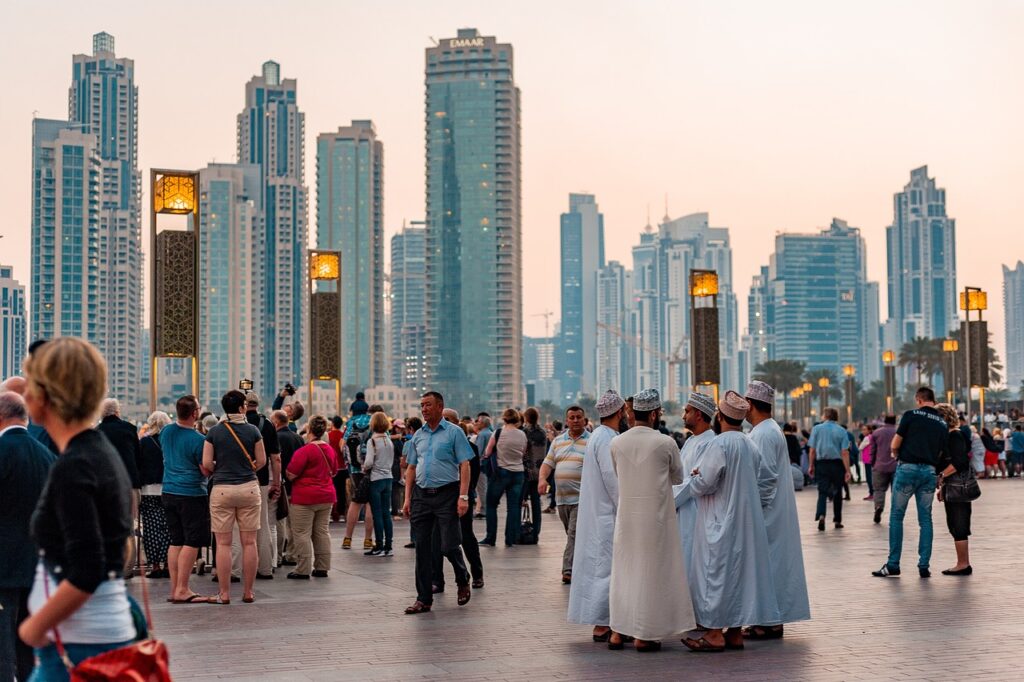Arab Culture being a High Context Culture

Photo: Pixabay
By: Eman El-Ajlouni / Arab America Contributing Writer
The phrase “high-context culture,” which was first introduced by anthropologist Edward T. Hall in the 1970s, is frequently used to describe Arab culture. While low-context cultures focus more on explicit verbal communication, high-context cultures are intuitive, contemplative, and engaged with the community. They rely on implicit communication, common knowledge, and contextual signals to transmit meaning. We will take a look at what it means for Arab culture to be high-context and how this characteristic affects many facets of Arab society in this article.
Implied communication
High-context cultures, like Arab culture, rely heavily on non-verbal and visual cues like body language, tone of voice, and facial expressions to convey meaning. Arabs frequently communicate ideas using metaphors, allegories, and actions that are symbolic. This might make it difficult for outsiders to fully understand and grasp a dialogue unless they are aware of the cultural background.
The Importance of relationships
In Arab culture, establishing and keeping connections is extremely valuable and important. In high-context cultures, communication is frequently modified to maintain these relationships. Arabs frequently engage in brief conversations and other introductions before diving into the main topic of discussion.
Group Identity
High-context cultures frequently give group identification a higher priority than individual identity. Since the family is seen as a significant component of both individual and societal existence in Arab countries, it plays a significant and vital role in people’s lives. People are expected to follow society’s standards and expectations, and decisions are frequently made with the beneficial outcomes of the group in mind.
Maintaining and respecting hierarchy
Being a high-context culture, Arab culture has a propensity towards hierarchy, with the dynamics of interpersonal interactions being heavily influenced by age, seniority, and social standing. Respecting elders, those with greater status, and authoritative figures requires both verbal and nonverbal cues.
Respect and Indirectness
Direct confrontation and criticism are frequently avoided in high-context cultures in order to preserve harmony. Instead, they prefer indirect communication. Arabs may use euphemisms or softer language to handle delicate subjects. People frequently minimize their opinions in an effort to appear fair and polite. It can be necessary to infer what was not mentioned. People from low-context cultures may occasionally mistake this indirectness for uncertainty.
Nonverbal Interaction
In Arab culture, nonverbal clues are a vital component of communication. Body language, posture, gestures, eye contact, facial expressions, voice tone, and physical closeness all transmit meaning and are frequently more significant than actual uttered words. Effective communication requires an understanding of these cues.
Hospitality
Arab hospitality, which has its roots in high-context communication, is well known. The ultimate goal of Arab hospitality is to respect a guest, establish a connection, and eliminate the “awkwardness” and anxiety involved with meeting someone new. One of the major tenets of the host’s beliefs is the Arabic term “karam,” which implies kindness. Sharing meals, making tea or coffee for visitors, and exchanging warm welcomes are all methods to show respect and develop connections.
Conclusion
In conclusion, the high-context nature of Arab culture is a distinguishing feature that influences numerous aspects of everyday life, such as social dynamics, communication, and relationships. For cross-cultural relationships with Arab people and communities to be successful, one must comprehend and appreciate these cultural characteristics. It’s critical to approach Arab culture with an open mind, a desire to learn, and a respect for the depth of this highly contextualized civilization.
Check out Arab America’s blog here!









